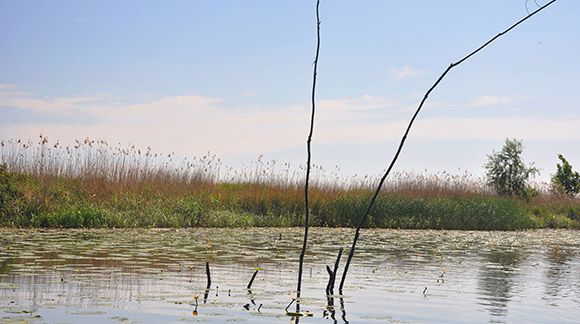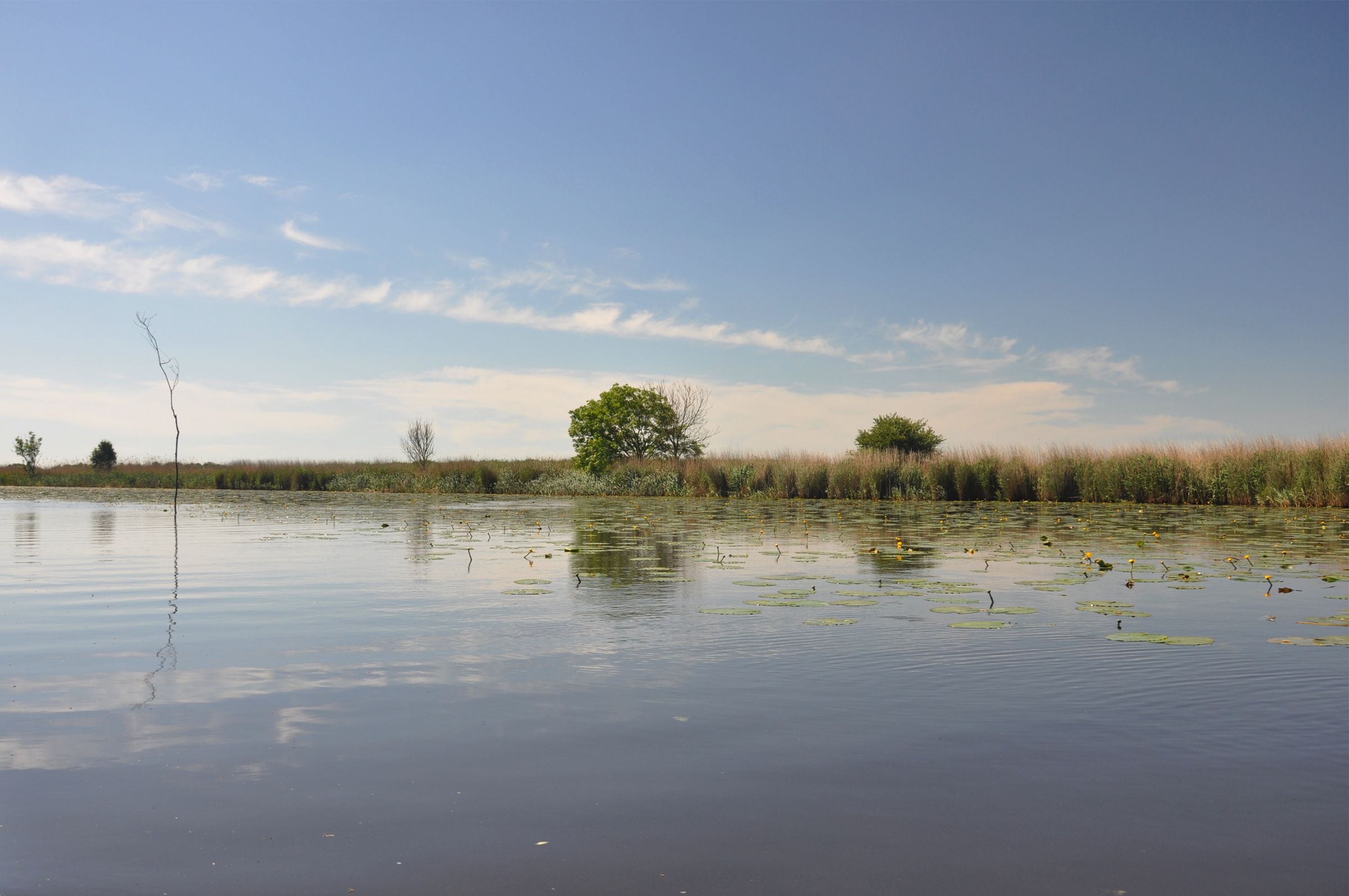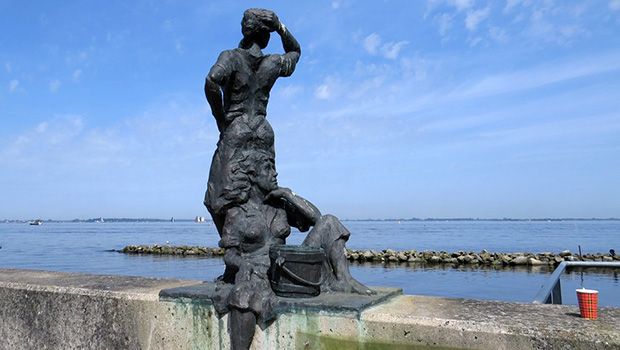ROUTE TJONGER -TJEUKEMEER
Head left from the Pier Christiaan Ditch to the Tjonger and experience the beauty of the marvelous nature. If you pay close attention, there is a high chance of observing a buzzard, peregrine, blue or brown harrier above the reed beds.
White and yellow water lilies float on the water and coots and grebes swim along with the boat.
As you travel along and enjoy the beautiful nature, you will arrive at a natural junction of the Tjonger. This branch is called the Broere Ditch or Vierhuister Waterway and runs in a straight line via Vierhuis to Lake Tjeuke. A small mooring island is in the middle of this junction. This is a great resting spot for having lunch.


Beaches at Lake Tsjeuke
On Lake Tsjeuke, you paddle along the beautiful northern side to the surf and sand beach of Rohel.
On the other side of the lake, you can find an especially popular uninhabited island. From here, you can see the chimney of The pumping station of Echten on the dike. Between 1856 and 1859, this station drained the diked Veen Polder. The polder was initially drained with wind power.
The pumping station is recognized as national heritage and is open as a museum in the summer months. The pumping room with machinery houses an exposition about the polder of Echten becoming peat. The old boiler room of the pumping station now offers space for a gallery, Gallery Het Gemaal. The Pumping Station Gallery and Gallery Het Gemaal are opened on Saturday and Sunday afternoons during the summer months.
Tsjûke en March
Next to the pumping station is a statue of origins of the name of Lake Tjeuke: Tsjûke en March.
There are two different versions of the history of both women.
Version 1
Two peasant women returned from milking cows when they discovered a fire. One woman carried the milk and the other carried nothing. The other said to use the milk to put out the fire, but the first thought this was a bad idea. Reason enough for the woman without milk to call her companion Tsjûke, meaning bitch, since Tsjûke referred to a dog. The word remained linked to the region. And that is how the Tsjûkemar would have gotten its name.


Version 2
Once upon a time, there were two sisters, Tsjûke and March. They were together when a fire broke out. Due to the thick smoke, they lost each other. They tried to find each other by calling their names. Their voices could still be heard in the area for a long time. Who listened carefully could still make out Tsjûke, March, Tsjûke, March, Tsjûke, March…… And that is how the Tsjûkemar would have gotten its name.



